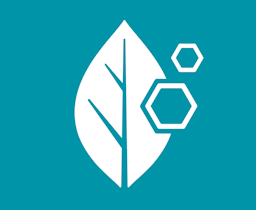Spirulina
Arthrospira plantensis - spirulina is a type of blue-green algae which is found in warm, alkaline waters around the world- in particular Mexico and Central Africa.
The use of spirulina dates back to the 16th century. The Aztecs would harvest “blue mud” which contained spirulina. In Africa spirulina was called Dhie and was harvested in a similar way to the Aztecs in the Sahara Desert.
What makes spirulina a power wholefood is its rich source of nutrients. Spirulina contains almost 70% protein which is highly digestible and provides all of the essential amino acids. Spirulina is also a rich source of the B group vitamins, chlorophyll and a number of essential minerals including zinc, selenium and magnesium.
Spirulina is potentially a powerful antioxidant due to its content of antioxidant nutrients including beta-carotene, tocopherols and phycocyanins.
White tea
Camellia sinensis - tea, of which there are many different types, is probably one of the most popular beverages around the world. White tea is the dried leaves of a sub-species of C. sinensis in which the bud or first leaves are picked and are minimally processed. The buds are covered in fine white hairs leading to its white appearance.
White tea makes the power wholefoods list for its phytonutrient rich profile and their antioxidant activity. These antioxidant nutrients include polyphenols, catechin and epigallocatechin gallate (EGCG) which act as free radical scavengers.
Reishi mushroom
Ganoderma lucidum - reishi mushrooms have a long history of medicinal use and are even documented as far back as the Chinese pharmacopoeia of the first century BC In traditional Chinese medicine it is used for fatigue, cough, liver health and to promote longevity. wheat grass
Reishi mushrooms grow on decaying logs and tree stumps and are native to China, Japan and North America. There are six different colours of reishi- blue, yellow, red, white, black and purple and it is the red that is most commonly used.
Reishi mushroom earns it’s power wholefood credentials from active components polysaccharides and triterpenoids. These components have antioxidant and immune supporting actions. In particular beta-D-glucan and Ling Zhi are thought to be responsible for reishi’s immune supporting benefits.
Wheat grass
Triticum aestivum - wheat grass is the young green plant that grows to produce wheat grain. Like spirulina, wheat grass is referred to as a “green food” rich in chlorophyll and a power wholefood containing vitamins A, C and E, iron, calcium and magnesium.
Wheat grass also contains about 30 enzymes and is a complete protein with all essential amino acids.
Did you know? Despite its name, wheat grass does not contain gluten and is suitable for those on a gluten free diet.
References available upon request

